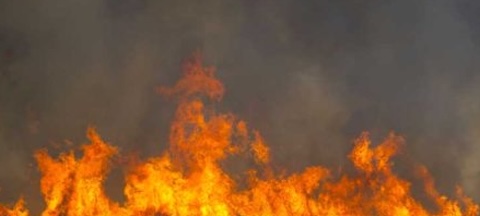Where buffalo roam …
Published 2:57 pm Thursday, June 19, 2003
MISSION – Tribal officials hope to trap the elusive buffalo herd that has been roaming the hills and invading tribal and private land in the Poverty Flats area east of Pendleton.
But it won’t be easy.
Trending
“It’s a day by day thing as to exactly where they are,” said Debra Croswell, public affairs manager for the Confederated Tribes of the Umatilla Indian Reservation.
The man who owned the herd, Robert Carey, apparently traveled to Mexico. He either left the gate open or the buffalo escaped on their own, but they’ve been roaming free for weeks. The property where the animals were housed has been repossessed by former owner Darrel Sallee of Hermiston. Sallee has already begun environmental rehabilitation work on the property, which had been damaged by the herd.
In response to requests from Tribal members, landowners and the public, the CTUIR hopes to capture the herd, which now numbers 32 after some were killed by illegal hunting.
After consulting with Indian tribes that manage buffalo – primarily the Shoshone-Bannock in Idaho, the Yakama in Washington and the 51-member Intertribal Bison Cooperative – and the Oregon Department of Fish and Wildlife, the CTUIR is constructing a “corral” of elk panels on loan from the Oregon Department of Fish and Wildlife, to try and trap the animals.
“We opted to set up this trap and bait them into it,” Croswell said, adding the trap should be in place by the end of today.
Carl Scheeler, program director for the Tribal Wildlife Program, was assigned to the task of capturing the animals and found himself taking a crash course on buffalo behavior.
Trending
He said he’s learned “you can’t make buffalo go anywhere that they don’t want to go, they’re difficult at this time of year because of calving and it’s difficult to bait them into a trap.
“And if you try to herd them with horses, the bulls will gore the horses,” he added. “Any handling has to be done very gently and thoughtfully to make them think that they had the idea. They’re not like cattle.”
Local ranchers are anxious to have the animals contained in order to begin grazing their own livestock. But the bison may not be interested in the hay and other edibles put out to lure them back into captivity because there is still quite a bit of forage left on the hills, Croswell said.
Scheeler and his team spent a week spreading bait in an open field where the trap is now erected. By next week, Scheeler hopes to hide in some nearby trees until the herd enters the enclosure and then pull the heavy door shut by a rope attached to an all-terrain vehicle.
“One of the biggest challenges is to get them all in the pen at once,” Scheeler said. “These animals have a very strong dominance hierarchy and they tend to go crazy once part of their herd is missing. They’re extremely dangerous.”
Any decision as to what will happen to the herd after it is captured is still up in the air, Croswell said.
“There are some folks who want the Tribe to start a herd,” she said. “But that decision has not been made yet. The board will need additional information.”
Some leaders have suggested keeping the herd as a tourist attraction at the Wildhorse Resort & Casino or maintaining it to honor the buffalo’s role in tribal history.
“We’ve got lots of oral histories about our people traveling up to what is now Montana to hunt buffalo,” said Croswell.
For now the Tribes see the first step as getting the animals back into a controlled situation with a minimum of injury and damage.
“We’re playing it day by day and trying to get them used to the corral,” Croswell said. “We would like to ask people not to be up there, to protect the animals and the people.”
For more information about the buffalo containment effort, call the CTUIR Public Information Office at 966-2033.









